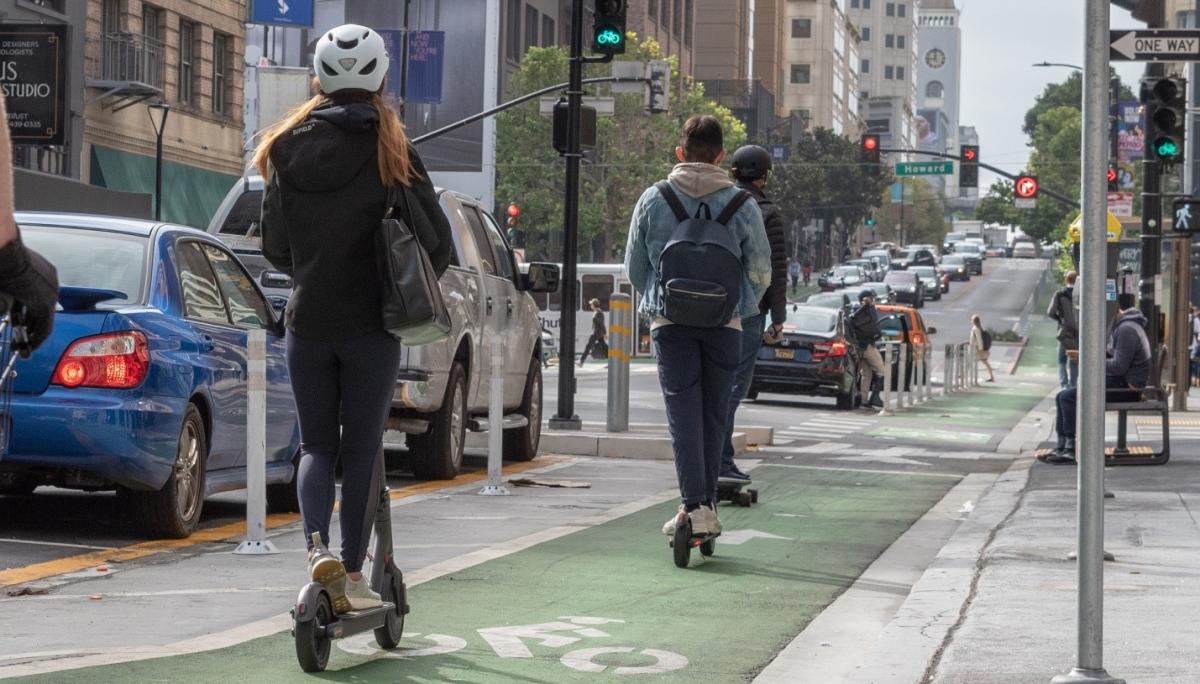By Jason Hyde

The SFMTA is releasing its next round of Powered Scooter Share permits on July 1.
Scooters remain a sustainable mode of travel and a complement to Muni and public transit service as the city recovers from the pandemic and San Franciscans begin to travel more. The SFMTA’s Powered Scooter Share Program is essential in ensuring that shared scooter operations support the city’s economic recovery in a safe, sustainable, and equitable way.
The SFMTA received four submittals for the permit program and will issue permits to two operators: Spin and Lime. Permits will be in effect for a one-year term, with the option to extend for another year at the discretion of the SFMTA based on compliance with various program metrics.
While the new permit program does not set a limit on the number of scooters each operator may deploy, it does limit the overall citywide fleet size at 10,000. Starting at a base of 2,000 scooters per operator, permittees will be encouraged to apply for permission add scooters in 500 increments every several months. Fleet size increases will be predicated on compliance with SFMTA defined metrics and policy outcomes, including those focused on equity, access, and sustainability.
Allowable Scooter Fleet Size at Permit Launch
Lime 2,000
Spin 2,000
The SFMTA also received an application for the 2021 Powered Scooter Share Permit Program from Scoot. The Agency recently learned of revelations, confirmed by Scoot, that the company has been using unauthorized subcontractors in violation of the terms and conditions of the 2019 permit program. The SFMTA takes these issues very seriously, and will defer a decision on 2021 permit issuance to Scoot to allow time for full investigation and complete its evaluation. Scoot service will pause on July 1st during this time.
New Permit Highlights
The 2021 Powered Scooter Share Permit program builds on the lessons learned from current permit program with the goal of creating a more useful, safe, and equitable program. It establishes new guidance and requirements in these areas:
Accessibility
Adaptive scooters will become a permanent part of the citywide scooter fleet. Additionally, operators will continue their on-demand adaptive programs.
Community Engagement
Permits include new outreach requirements and programs with Community-Based Organizations and local small businesses to expand to a more diverse and equitable ridership.
Labor Harmony
The new permit applications prioritized operators who more frequently hire employees rather than use outside staffing agencies or independent contractors.
Safety
Permittees must implement an escalating penalty structure for unsafe or illegal riding or parking behavior. Furthermore, safety-related scooter charging requirements have been strengthened per feedback from the San Francisco Fire Department.
Equitable Access to Scooters and Distribution Requirements
The program emphasizes service to all neighborhoods in San Francisco. This includes ensuring that everyone in the city is within walking distance of a scooter, particularly in Communities of Concern and outlying areas.
Scooter Parking
The SFMTA will increase the bike rack fee paid by operators from $75 to $100 per scooter to ensure adequate scooter parking throughout the city.
Next Steps – Permitting
The Agency plans to closely monitor permittees’ compliance with the permit terms and conditions once the new permits launch on July 1st. The Agency also looks forward to further stakeholder collaboration as it continues to evolve the Powered Scooter Share Program.
Published June 26, 2021 at 01:00AM
https://ift.tt/3gTZ8f6
Comments
Post a Comment